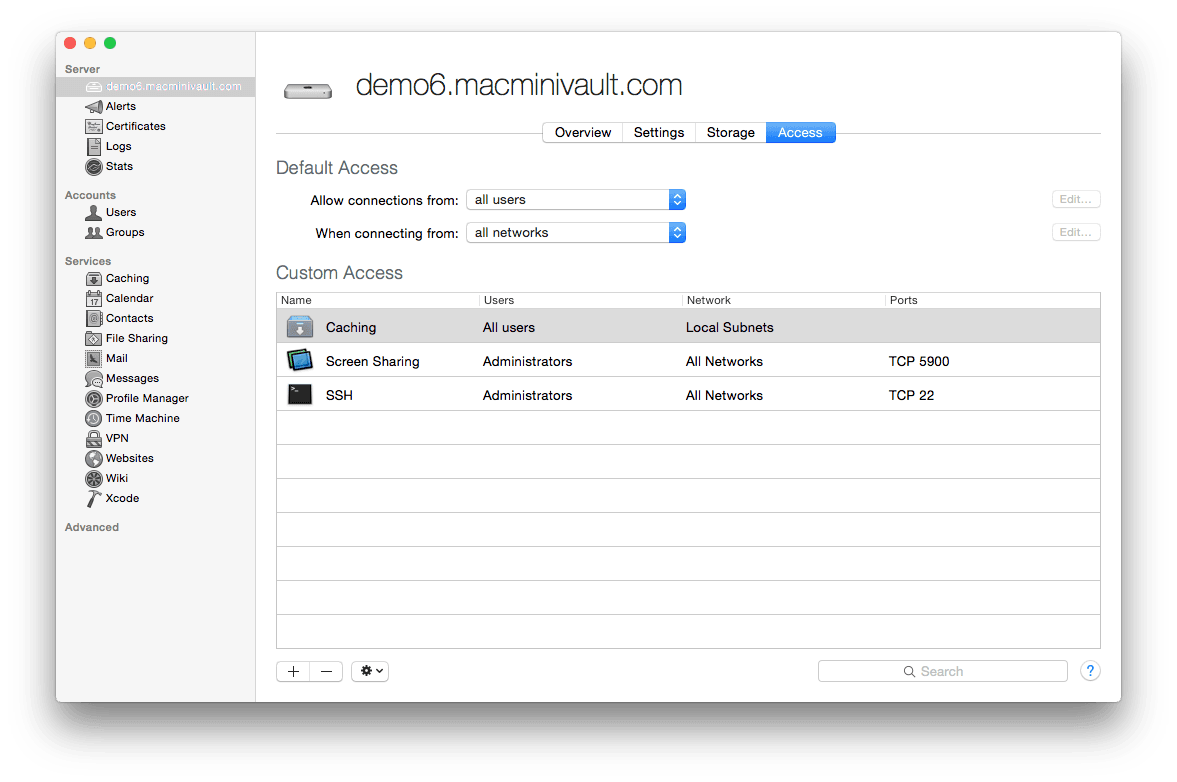

(Note: This is not the same as the static IP we discussed in the last section this is a static IP for your whole network-not one computer. Have you paid your ISP for a static IP? If so you can skip this step and use that IP to connect to your VPN. Depending on your router setup, you may also want to set up a local static IP for that Mac. How you do this will depend on your router again, read our article on port forwarding for more information.
#VPN SERVER MAC 10.10 HOW TO#
RELATED: How to Set Static IP Addresses On Your Router But to summarize, you need to start by accessing your router’s admin interface by typing your router IP address into a web browser.įrom there, you need to find the port forwarding settings, and forward the following ports to your macOS Server’s IP address: We’ve talked about setting up port forwarding in the past, so read that article for more detail. If you use a non-Apple router, however, you’ll need to set things up yourself. RELATED: How to Forward Ports on Your Router Feel free to skip this section, and follow the prompts when they come up later. If you own an Apple AirPort router, congratulations: macOS Server will do this automatically when you set up your VPN. Step Two: Set Up Port ForwardingĬonnecting to your VPN requires port forwarding, which needs to be configured at the router level. In order to use the VPN, however, we need to configure a few things on your network.
#VPN SERVER MAC 10.10 SOFTWARE#
It’s not as complicated as it sounds, we promise.įeel free to launch the software after installing it will configure a few things and then be more or less ready for you. Apple’s AirPort routers make things very simple thanks to integration, but most routers should work fine. A router you can configure with port forwarding and dynamic DNS.
#VPN SERVER MAC 10.10 DOWNLOAD#


It sounds hard to do, right? But if you’re got a Mac desktop that’s always connected to your network, you can set up your own VPN server for just $20, and it probably won’t take you more than a half hour to set up if you know your way around a network. Unless, of course, you build your own VPN. RELATED: What Is a VPN, and Why Would I Need One? There are many different third party VPN services to choose from, but ultimately using a VPN means trusting the service will keep your browsing data private. A VPN encrypts your traffic, useful when you’re using a public Wi-Fi hotspot or any network you don’t trust. VPNs can be useful tools for keeping you secure online.


 0 kommentar(er)
0 kommentar(er)
